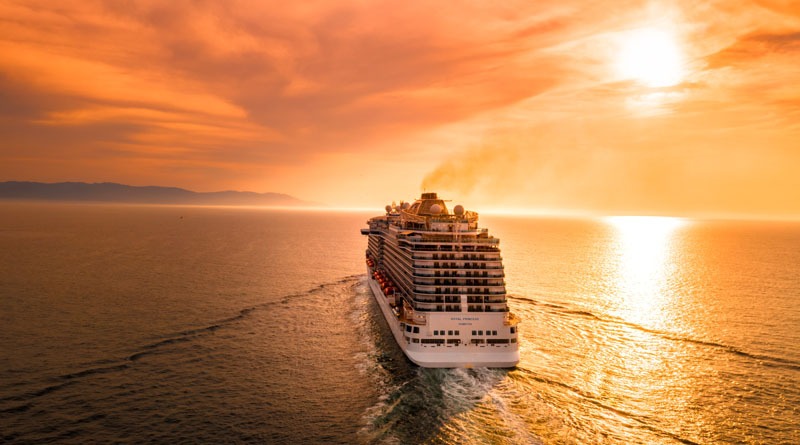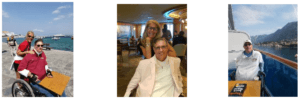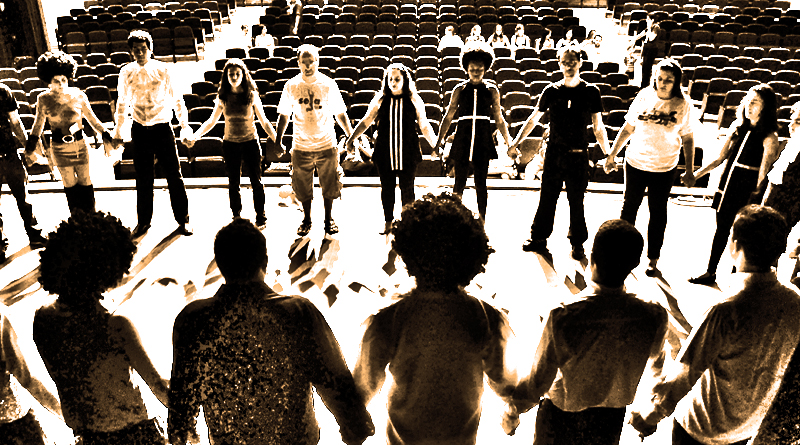
Disabilities & Travel: The Trip of a Lifetime
By Dr. J.R. Harding
Traveling with Disabilities
Traveling is one of the benefits of modern society. No longer does it take months on the perilous seas to cross continents and experience the ancient wonders of the world. However, for persons with disabilities, we can face numerous unknown barriers while enjoying this modern pastime of continent hopping.
 For some time, Erika (my wife) and I had envisioned a Mediterranean cruise to see all of the monuments of the great civilizations. After careful planning, we chose to fly into Rome, spend 1 1⁄2 day with the Renaissance, board a cruise ship at the local port (Civitavecchia, Italy), island hop for the next 7 days on a Mediterranean cruise, and then finish our journey with 2 days in Athens.
For some time, Erika (my wife) and I had envisioned a Mediterranean cruise to see all of the monuments of the great civilizations. After careful planning, we chose to fly into Rome, spend 1 1⁄2 day with the Renaissance, board a cruise ship at the local port (Civitavecchia, Italy), island hop for the next 7 days on a Mediterranean cruise, and then finish our journey with 2 days in Athens.
As a quadriplegic, my challenges during the trip were numerous and my opportunities for site seeing of the historical monuments were somewhat limited. It’s not that the Italians, the Greeks, or the cruise industries lack accessible elements, but it’s just not realistic to have unfettered access within the ancient cities, islands, cruise ships, or airplanes!
On the Plane
I thought I had solved the airplane challenge by utilizing thousands of points to acquire first- class tickets that would enable horizontal sleeping and a place to handle mid-flight catheterization comfortably. While thinking I was clever, I learned that the Airbus had very limited transfer space and at 6 foot 5 inches, my seat was unable to recline
completely. Consequently, I had to recruit the assistance of a male flight attendant to help lift me out of my seat and carry me to the galley to attend to my needs. There was no guarantee there would be a male flight attendant, let alone one strong enough to assist with lifting me, and the flight attendants do not have to help since it is not a requirement of their job. It is strongly advisable to use the restroom facilities before getting on the plane. This way, your need for assistance during the flight is minimized. Nobody wants to be “a problem child.”
Rome
Having called the hotel ahead of time, and emphasizing my accommodation needs, the hotel in Rome was ready to embrace me. Despite the advanced measures and conversations taken to ensure I would have access to a roll-in shower, we failed to consider the elevator and hotel room door dimensions. As a result, my first unanticipated barrier was fitting into a tiny historic elevator. We had to remove my leg rests and wheelie bars from my manual wheelchair. Since I was unable to self-propel, My PCA had to run up the staircase and meet me at the elevator.
 He then had to reassemble my wheelchair for safe maneuvering. We then navigated through the narrow hallways like a cat with its whiskers. We arrived at my room, only to learn that my wheelchair would not fit through the door. One of the bellmen used his pocket knife to remove the door’s hinges. This revealed not a spacious ADA American size hotel room, but rather a tiny cubicle that was barely larger than my walk-in closet at home. By the grace of god, the roll-in shower did accommodate my chair, but half of my body stuck out – creating Lake Michigan in the morning, but we managed to get clean and refreshed.
He then had to reassemble my wheelchair for safe maneuvering. We then navigated through the narrow hallways like a cat with its whiskers. We arrived at my room, only to learn that my wheelchair would not fit through the door. One of the bellmen used his pocket knife to remove the door’s hinges. This revealed not a spacious ADA American size hotel room, but rather a tiny cubicle that was barely larger than my walk-in closet at home. By the grace of god, the roll-in shower did accommodate my chair, but half of my body stuck out – creating Lake Michigan in the morning, but we managed to get clean and refreshed.
While the city of Rome itself has basic curb cuts and accessible public transportation, I would encourage any traveler with mobility issues to hire personal transportation. We enjoyed an incredible nighttime tour of all of Rome’s magnificent landmarks with the night lights illuminating their architectural splendor. With the benefit of a very capable local driver, we were able to do this in less than three hours with minimal barriers. I would highly recommend Outreach Accessible Travel for adaptive transportation needs while in Rome. They were outstanding, affordable, and professional; they also work out of London.
The Cruise
The highlight came with the weeklong cruise, including five ports of call (Salerno, Kotor, Corfu, Chania, and Mykonos) which culminated with two nights in Athens. I would highly recommend this cruise to anyone with a disability. Cruise ships that carry the American flag include almost every accessible feature/element that we have come to expect, need, and utilize in
America. My room was located right next to the elevator and had a roll-in shower, access to both sides of the bed, and a wheelchair-accessible balcony. The staff is there to serve and you can count on them to go the extra mile. I would caution future travelers to explore accessible excursions through third-party vendors rather than paying for the premium cruise package. We used both options during this journey and found the former to be of better value and contain more accessibility. Just remember to book them ahead of time.

When traveling on any cruise, please remember to check the itinerary before you book. There are occasions when a ship will approach a port with tenders, meaning there will be no way for anyone with disabilities to exit the vessel. In my experience, generally, about 50% of the ports of call are accessible. You should do your research before putting down your deposit. Due to the limited number of accessible cabins (with roll-in showers), may need to book 9 to 12 months in advance.
Athens
The Athens leg of the trip did not start as planned. Traveling to the hotel, we arranged what we thought was an accessible taxi service, but that turned out to be far too small to hold me and my family. The hotel, on the other hand, was very accessible with an amazing view of the monuments. The downtown museum in Athens rivals any of our great city museums, and as a new property, its architectural design is completely accessible. I would not want to spoil the details for you.
 Athens is home to the Acropolis and the Temple of Apollo, the two most popular sites in Greece located a two-hour drive from each other. Luckily, we learned from our last cab driving catastrophe and called SAGE ahead of time. They are a travel agency specializing in accessible tools and experiences. Thus, the vehicle being utilized throughout the rest of our stay was sufficiently large to comfortably fit everyone’s needs. We would not have been able to see all of these wonderful sites without them. As Ben Franklin famously stated, “if you fail to plan, you plan to fail.”
Athens is home to the Acropolis and the Temple of Apollo, the two most popular sites in Greece located a two-hour drive from each other. Luckily, we learned from our last cab driving catastrophe and called SAGE ahead of time. They are a travel agency specializing in accessible tools and experiences. Thus, the vehicle being utilized throughout the rest of our stay was sufficiently large to comfortably fit everyone’s needs. We would not have been able to see all of these wonderful sites without them. As Ben Franklin famously stated, “if you fail to plan, you plan to fail.”
Overall, it was a wonderful trip I would recommend it to anyone. We plan to do the reverse cruise (Athens to Italy and/or Spain) next time!
Dr. JR Harding is a recognized disability leader from both personal and professional experiences. As a 2x quadriplegic, author of “Now What?” and “ADA Adventure,” accessibility expert, and international speaker, he has contributed for over 30 years to national, state, and community policy for the independence and self-sufficiency of persons with disabilities. He has served under 2 US Presidents, 4 Florida Governors, and continuously serves on a number of community-based organizations. This service currently includes: Evergreen Life Services (Director), The Florida Alliance for Assistive Service and Technology (FAAST) (Director), The Florida Network on Disabilities (Director), Blueprint 2000 (Advisor), and the Delta Disability Advisory Board (member). He is the first person with a significant disability to graduate from both Leadership Florida, Leadership Tallahassee, and he is also a co-founder of Florida Disability Mentoring Day (DMD) which is now a part of the Florida Disability Employment and Awareness Month (DEAM) annual programming. He completed his doctorate from Florida State University (FSU) in Higher Education and Public Policy. And after nearly 20 years of federal and state disability policy development and implementation, he now works full-time at FSU. He and his lovely wife Erika live and work in Tallahassee, FL.
To learn more, visit: http://jrharding.com/




